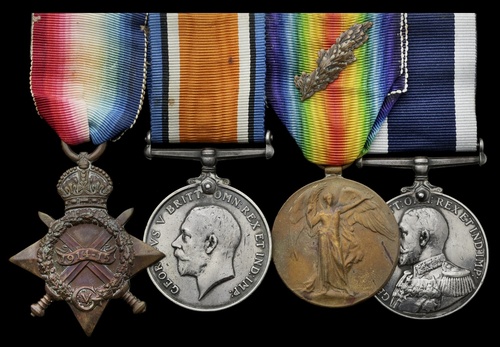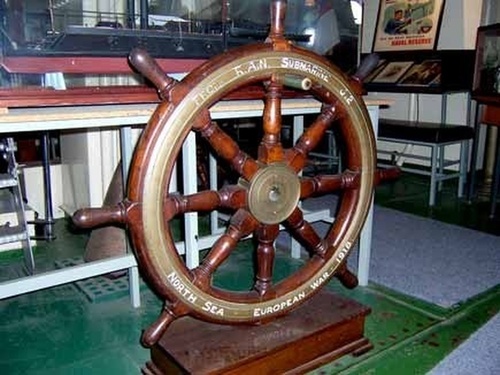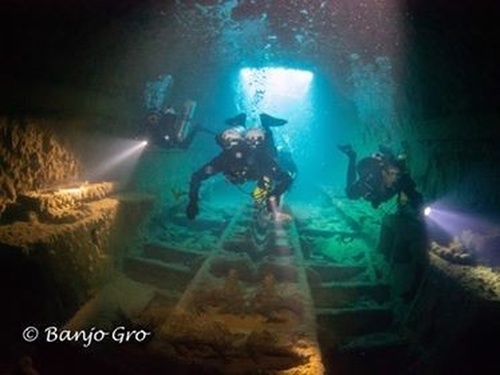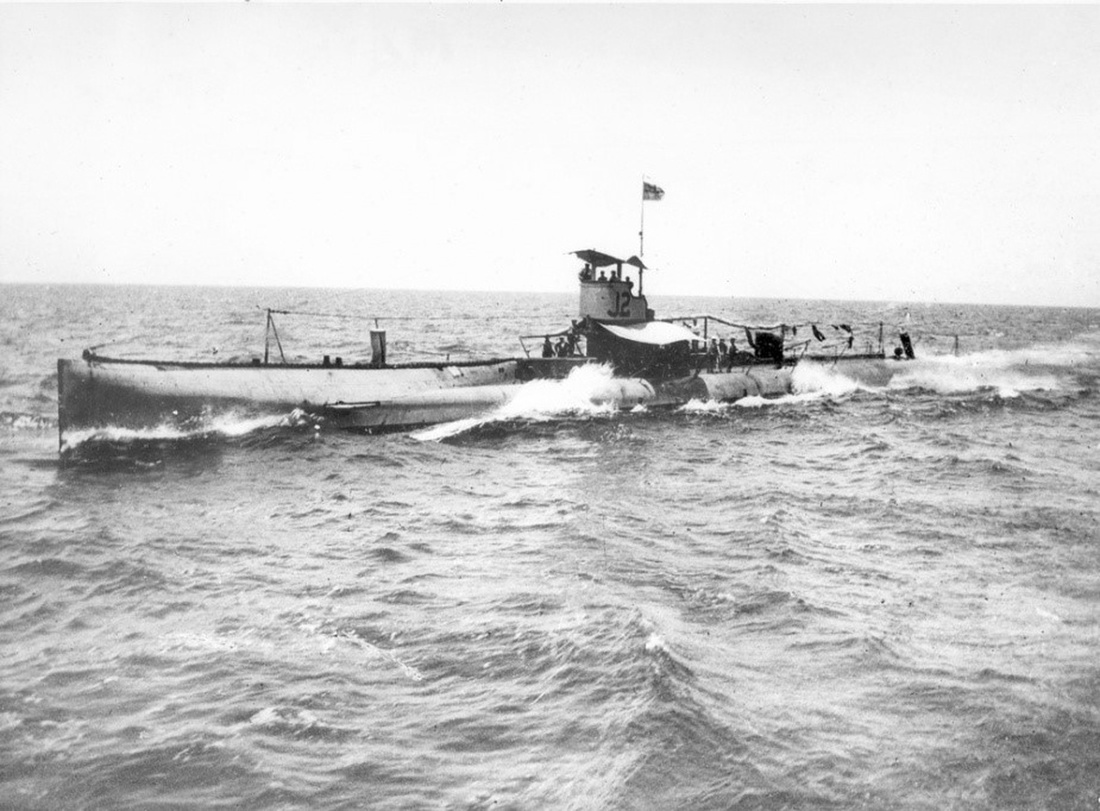Auction: 22003 - Orders, Decorations and Medals
Lot: 372
7 JULY 1917: A SUB-ON-SUB ENCOUNTER OFF THE ORKNEYS
A Great War submariner's campaign group of four awarded to Chief Engine Room Artificer 1st Class S. W. G. Herbert, Royal Navy
Recommended for the D.S.M. for his part in the J-2's rare 'sub-on-sub' encounter against the U-99 off the Orkneys in July 1917, he was ultimately rewarded by a mention in despatches
J-2 was subsequently gifted to the Royal Australian Navy, in which capacity she served until 1924, prior to being scuttled off Port Phillip in Victoria, where, today, she is much-photographed by the scuba diving fraternity
1914-15 Star (M.1149 S. W. G. Herbert, E.R.A. 3., R.N.); British War and Victory Medals, with M.I.D. oak leaf (M. 1149 S. W. G. Herbert, C.E.R.A. 2, R.N.); Royal Navy L.S. & G.C., G.V.R., 2nd issue, fixed suspension (M. 1149 S. W. G. Herbert, C.E.R.A. 1, H.M.S. Vivid), mounted as worn, minor official correction to last, contact marks, nearly very fine or better (4)
Samuel William George Herbert was born in Swindon, Wiltshire on 30 January 1886 and entered the Royal Navy as an Acting Engine Room Artificer 4th Class in August 1909.
Posted to H.M.S. Dolphin for services in submarines in May 1915, he remained a member of the 'Silent Service' for the duration of the war, initially with an appointment in the D-8 from November 1915 until February 1916.
Sub-on-Sub
However, it was during his subsequent appointment in the J-2 that he won his mention in despatches. Having joined her in August 1916, as part of the 11th Submarine Flotilla at Blyth in Northumberland, he was present at her memorable 'sub-on-sub' encounter against the U-99 off the Orkneys on 7 July 1917.
On 12 June 1917, Kapitan-Leutnant Eitester took U-99, of U-Flotilla II, out of Heligoland bound for the waters between the Orkneys and Norway. On 6 July, U-99 encountered a convoy about 70 miles east of Pentland Firth. Eitester attacked and managed to torpedo and sink one of the escorting destroyers, the Itchen.
The next morning U-99 was running on the surface some 115 miles to the east of the scene when she was sighted by the submarine J-2 at a range of some 5,000 yards. Under the command of Lieutenant V. M. Cooper, R.N., J-2 launched four torpedoes from her bow tubes at the U-boat and a column of black smoke appeared in the vicinity of the enemy's conning tower. The enemy remained in sight for a few seconds and then disappeared. No explosion was heard on J-2's bridge or in the torpedo room, though one was heard in the engine room. At the time a hit was not allowed, but according to German records U-99 was in the area at that time and did not return from patrol.
Herbert's name subsequently appeared on an Admiralty list of ratings recommended for 'for long and arduous service and successful action with enemy armed vessels'. It appears that he was recommended for the Distinguished Service Medal, but in the event he was awarded a 'mention' (London Gazette 2 November 1917, refers).
Subsequent career
Having departed J-2 on 20 July 1917, he next joined the L-6 and remained likewise employed until August 1919.
Following further appointments in submarines in the period 1920-22, Herbert was advanced Chief Engine Room Artificer 1st Class in July 1923 and awarded his L.S. & G.C. Medal in September 1924. He returned to regular seagoing duties about the same time, with an appointment in the destroyer Scout, and was finally pensioned ashore in August 1931.
Postscript
Following the conclusion of hostilities in November 1918, the Admiralty presented the six remaining boats of the J-class to the Australian Government, J-2 among them. The submarines were formally commissioned into the Royal Australian Navy (R.A.N.) at Portsmouth in March 1919, prior to commencing their passage to Australia in the following month; they were escorted by the depot ship H.M.A.S. Platypus and the light cruiser Sydney.
Following ports of call at Gibraltar and Malta, the flotilla was joined by Brisbane at Aden, prior to making for Columbo and Singapore. Finally, and having stopped over at Thursday Island in north Queensland, they arrived at Sydney on 15 July 1919.
In May 1920, following a refit at Garden Island dockyard, J-2 sailed for the submarine base at Geelong, Victoria, from whence she would sally forth to visit Tasmania.
But in common with her consorts, and due to high running costs, her career in the R.A.N. was short-lived. She was sold to the Melbourne Salvage Syndicate and then scuttled three miles off Barwon Heads, outside Port Phillip, in southern Victoria, in June 1926.
Fortunately, however, her helm survives to this day, and is on display at the H.M.A.S. Castlemaine Museum Ship, Williamstown, Victoria.
Moreover, in common with three of her J-class consorts, she today provides a challenge for enthusiastic scuba divers. For footage of her wreck - and a rocky soundtrack - see:
https://www.youtube.com/watch?v=a83h-IgRID0
Subject to 20% VAT on Buyer’s Premium. For more information please view Terms and Conditions for Buyers.
Sold for
£350
Starting price
£320











